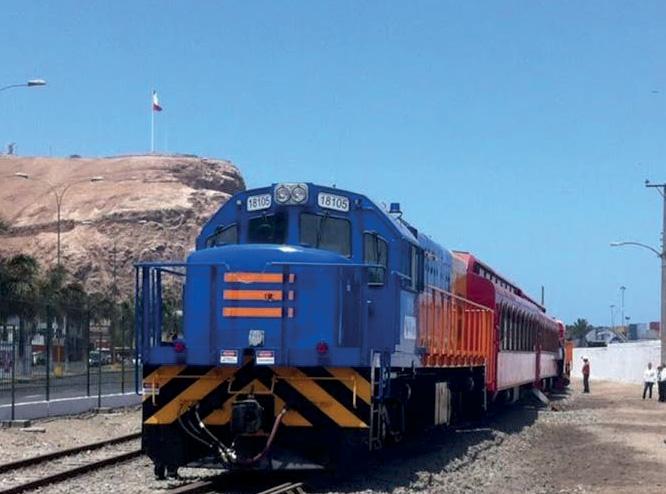
11 minute read
Arica railroad readies
Truckers are fi ghting the opening of the railroad between La Paz, Bolivia and the port of Arica in northern Chile but it seems inevitable. Rob Ward reports
After nearly 17 years of inactivity the vital railroad link between the Bolivian capital La Paz and the north Chilean port of Arica, is preparing to re-open for business but, after several road blockades by Bolivian truckers, it may have to wait a few more months.
Following the five-year bloody War of The Pacific, fought by Chile against Bolivia and Peru from 1879 to 1884, Chile grabbed large slices of Bolivia and Peru, including Arica, as part of the spoils but in 1904 Santiago signed a Peace and Friendship Treaty with Bolivia and in it promised to keep open an outlet to the Pacific for Bolivia, via the Ferrocarril Arica- La Paz (FCALP), which the Chileans built as part of that pact.
That functioned well until 2001 but came to an end when severe storms and flooding destroyed much of the track. For a few years the operating company, AFALP, carried out some repairs and managed to get the service open sporadically, but eventually, in 2005, it went bust in terms of cargo although a passenger service, especially for tourists, continued sporadically.
Then, earlier this year, Terminal Portuaria Arica, the private company that operates the port of Arica under a 30-year concession worked with two railroad firms (Bolivia’s joint private-state run Ferroviaria Andina S.A. and Chilean state operated EFE),and conducted a detailed trial run to test the efficacy of the “allegedly moribund” railroad.
“And the system passed with flying colours,” Gabriel Tumani, General Manager, Terminal Portuaria Arica (TPA), told Port Strategy. “There were some rumours that much of the track was in a terrible state, etc, but that wasn’t really the case.”
Using two locomotives and 16 wagons, 422 tons of steel coils were delivered from Arica to their Bolivian destination but the wagons returned empty because of the trucker disturbances.
To coincide with an expected increase in box carryings TPA, which handled 167,321TEU in 2020 (down significantly, around 23%, from the 218,744TEU handled in 2019, due to COVID-19), is having advanced talks with a carrier in the WCSA to Far East trade to bring in a first-ever deep-sea liner service to Arica. All current services are feeders apart from Conosur, which is WCSA to ECSA.
Of those container carryings Tumani estimates that around 70% of all cargo – around 150,000TEU annually when things are going well - either originates or is destined for Bolivia. In tonnage terms some 70% of TPA throughput is containerised with the other 30% being breakbulk, mostly steel to Bolivia and the south of Peru. Under the 1904 Peace Treaty Arica offers Bolivian shippers free storage for imports and 60 days free for exports but charges for loading and discharge, and for add-on services such as stripping and stuffing.
TRUCKER REBELLION
However, faced with the possible future loss of cargo to rail, dozens of angry truck drivers in Bolivia, suffering from the severe reduction in business caused by the pandemic, blockaded roads around La Paz and forced the Bolivian government to promise not to re-open the historic railway; one of the world’s most strategic and precipitous going from sea level up to 13,000ft.
This led to Edgar Montano, Bolivian minister for Public Works, Services and Housing, bowing to pressure from powerful truckers’ unions, agreeing to halt the Arica-La Paz “trial runs”. Truckers had been blockading key highways to the west of La Paz.
“That seemed to be the end of it,” said one La Paz based shipping agent, “but when we delved deeper into the details of the ‘deal’ with the truckers it became clear that government ministers had only promised to delay not scrap the re-opening.
“To scrap it entirely would be one of the most stupid examples of Shooting Yourself in the Foot as the main beneficiaries are the Bolivian people and the railroad has always operated as a loss maker for the Chilean companies and their government but they subsidise the operation so as to keep their promises made a century ago in the 1904 Peace Treaty; and make some extra money from cargo handling through Arica.
8 The railroad
between La Paz, Bolivia and the north Chilean port of Arica is set to re-open
We hope we can announce direct calls to Asia…and to Europe. That’s the target ‘‘
“Bolivia has suffered more than most during the COVID-19 pandemic but I think that once the economy picks up there will be enough cargo moves for everyone. Prior to the COVID -19 outbreak shippers of both containerised and bulk commodities were complaining there weren’t enough trucks to deal with cargo volumes, so the demand is there in normal times. I think there is a good chance it will re-open in some form or other before the end of this year.”
Indeed, Port Strategy enquiries discovered that other ministries in Bolivia had only agreed a temporary ban and on condition that “the logistics problems of national and international cargo traffic” are reviewed with the trucking sector to find “better balanced solutions”.
The Arica to La Paz railway is one of the steepest, highest and most breathtaking in the world, rising from sea level to more than 4000 meters (13,123 feet) and it is also a key component of the Bolivian economy.
8 Highest point is General Lagos, amassing 4257 meters at 184km (from Arica) on the Chilean side, and the two border stations are Visviri in Chile and
Charaña in Bolivia. The Chilean section runs for 205km and the Bolivian part for 208km. 8 As the railway passes from Arica to Viacha, at the end of the line, it runs in a north-easterly direction through some of the most inhospitable lands of both countries as it snakes through incredible landscapes of deserts and snowy volcanoes. The railway used to terminate in downtown La Paz but the rails were taken up in 1997 and so, since then, the railway extends only to Viacha, around 40km southwest of
La Paz, offering extra local hauls. 8 It has been a lifeline for Bolivian shippers since it opened, back in 1913, and main Bolivian exports heading down the mountain have been copper, tin, lead, silver, wool and wood products. Heading up the mountain to the Altiplano main imports are: foodstuffs, chemical products, machine and car parts, electronic goods.
Shippers are still excited about the forthcoming option of a cheaper, more climate friendly transport mode to get their goods to and from La Paz, land-locked Bolivia’s largest and most important city with a metro population of 2.3 million (out of 11.5 million for the country), living at an altitude of 3650 meters (or 11,975 feet). Because La Paz (Bolivia’s de facto capital although Sucre holds many of the Judicial, constitutional and historical functions), lies in a bowl, the plateau above, and connected suburb/city of El Alto is located at 4061 meters or 13,325 feet) and hosts the world’s highest international airport, and is where the FCALP terminates.
Traditionally between 120,000TEU and 150,000TEU of cargo (or its equivalent in non-standardised boxes but stuffed/stripped in Arica) has been moved annually between Bolivia and Arica and shared between truck and train, but since the hiatus these volumes have been moved solely via trucking companies, predominantly Bolivian owned ones
Truckers today charge around $1,200 per box each way from La Paz to Arica and back and the 308-mile (496 km) journey can take between 10 and 12 hours. By railroad (400 km on rail track and 40-km truck journey at the end) it takes around 30 to 36 hours.
Tumani reports that the rail operators and TPA have received innumerable requests for information, especially on pricing of the rail service, from shippers thereby “proving the demand is there”.
“We are proud to take that first step,” says an optimistic Tumani, “at a certain moment, whether it is three or six months or even a year, we are not sure, but it will definitely go ahead and we are prepared and preparing for that eventuality. Right now the railroad companies are working at setting prices that can be competitive and gauging when the volumes will recover. As yet we do not know how much cheaper rail carriage will be but it will be cheaper, and there will be more long-term, stable contracts whereas truck prices are often spot.”
The TPA executive added that between 200 and 300 trucks per day ply their trade up/down the steep roads to the altiplano (high plain).
Arica has been a rapidly growing city in recent decades – with the population rising from around 20,000 in 1950 to 120,000 by the 1970s and up to 230,000 today – and is clearly of huge geo-political importance to the government in Santiago.
THREE GROWTH AREAS
Tumani and TPA are acutely aware that Arica is a very strategic port city and so they are focussing on three main areas of expansion.
“We have three main markets,” explains Tumani. “Our main one is Bolivia, but on top of this we also have northern Chile, the areas in and around Arica and also in the south of Peru. The latter is relatively new for us and began only in 2015 after we forged an alliance with Safra Tacna [a regional Peruvian body that aims to boost trade into the city].”
Tacna is 50 km across the border in Peru and the port of Ilo is just 30 km away, but Tumani believes Arica has better infrastructure.
With this in mind Tumani and the rest of the TPA commercial department are seeking to attract even more south Peruvian cargo by attracting more regular deep-sea liner calls, to add to the one quasi-long distance one, Conosur (operated by Maersk Line and Hapag Lloyd), between West Coast South America (Chile and Peru) and East Coast of South America (Argentina, Uruguay and Brazil) via the Magellan Straits. (Table 1: Liner Services Calling Arica).
To attract more cargo Arica has just completed a $6million dredging programme which has increased draft from 10 meters to 11.4 m, raising the size of the biggest boxships permitted from 8000TEU up to 11,000TEU.
Shippers in southern Peru, located 250 km from Arica will still go to Callao, 1,000 km by truck, because there they can connect directly with Callao’s many direct services but, according to Tumani, some of these cargoes should start coming to Arica once it gets regular direct deep-sea calls.
“We hope we can announce direct calls to Asia - where there is demand for local reefer cargoes, especially avocadoes, fish and onions - and to Europe, by the end of this year,” declared Tumani. “That’s the target.”
But Arica is not just an important port for containerised and general cargo, it is also a key regional player in breakbulk, liquid bulk and ro-ro.
Eukor has run regular ro-ro services to Arica for years – often unloading cars and machinery for the local mining industries – and Wallenius Wilhelmsen, the Norwegian-Swedish shipping company, began a regular service to Arica in April of this year, switching from Iquique, due south from Arica.
As with containers, breakbulk tonnage also took a hit last year falling to just 71,981 tons after averaging around 220,000 tons for the previous five years. During the first four months of this year TPA handled 30,567 tons of breakbulk, down 50.7% compared to the 46,072 of 2020, before the COVID-19 pandemic hit Chile hard.
TPA currently has four regular container services
1. The Maersk Atacama service from San Vicente, in the south of Chile up to Panama, 2. MSC … Callao (Peru) to Arica and sometimes, with inducement, on to Coronel, in the south of Chile. 3. Maersk and Hapag Lloyd: Conosur service to ECSA
Brazil and Argentina and turning south again in Rio de Janeiro.. via Magellan straits… 4. Cosco/CMA CGM… Polynesia service connecting
Iquique, Callao and Arica All are weekly services apart from Polynesia (4), which is every 2 weeks. All services are feeder services, apart from Conosur.
8 Table 1:
Liner Services Calling Arica
21

JUNE 202223 TO

Southampton United Kingdom
Seawork is open for business – all year


Reserve now for 2022. Make the most of marketing & PR support from Seawork and our leading commercial marine magazines, in print, online, eNews and via social media.


Europe’s leading commercial marine and workboat exhibition.
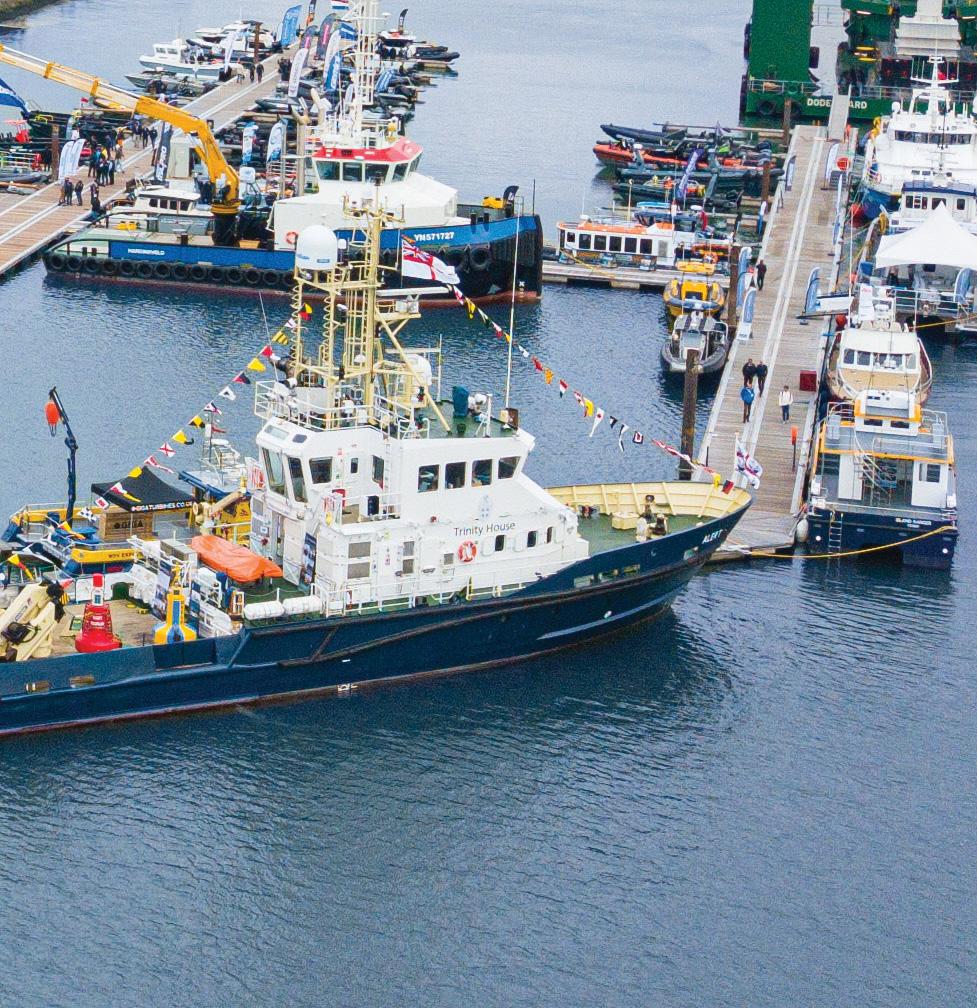

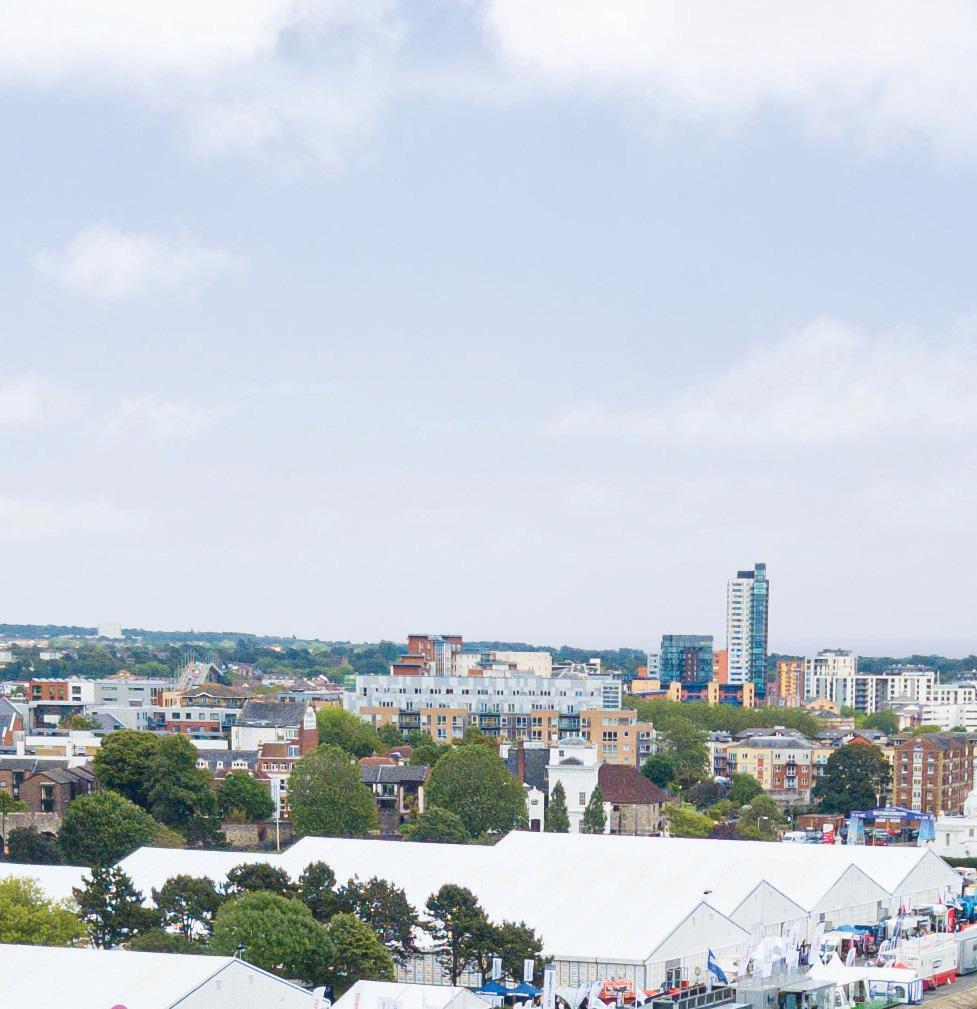
Show your latest innovations in vessels, equipment and services to over 7,700 maritime professionals. 12,000m2 of exhibition halls featuring 600 exhibitors. . E uropean Commercial Marine Awards (ECMAs) and Innovations Showcase.
Co-located with: Also returning in 2022 Speed@Seawork
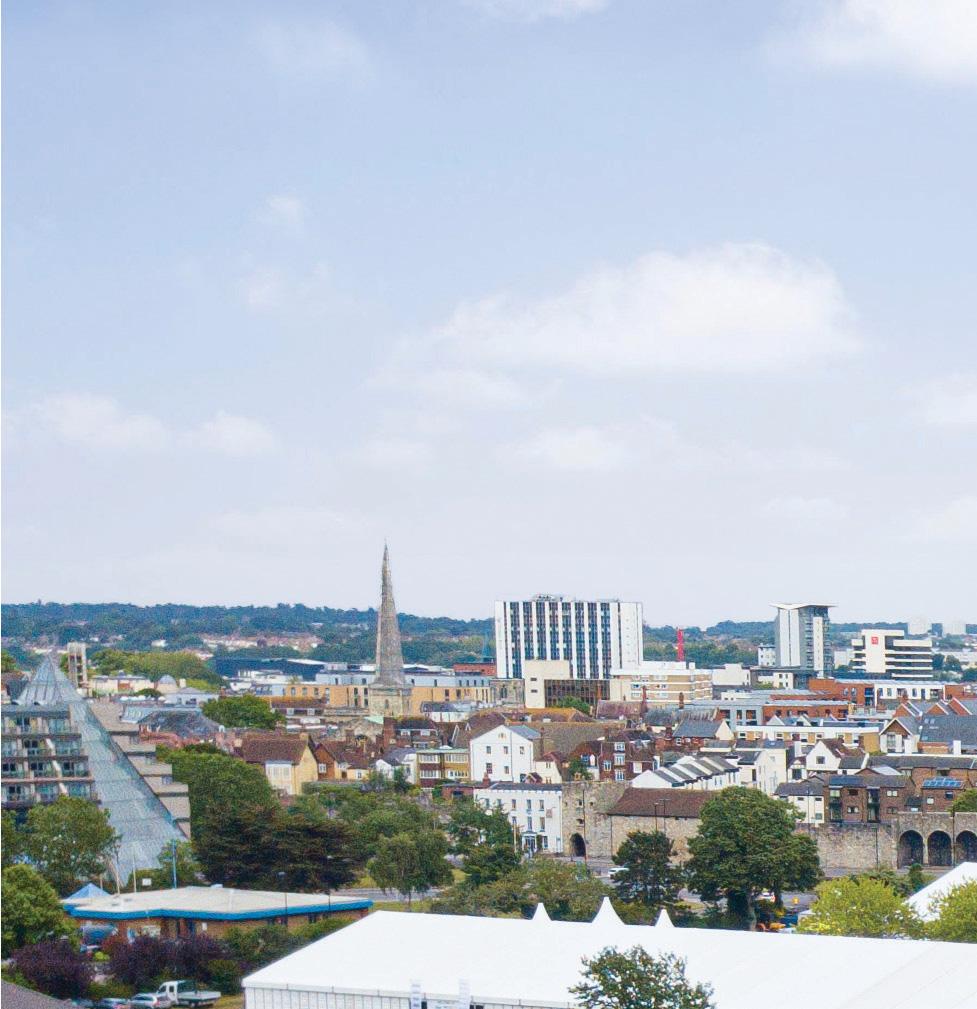
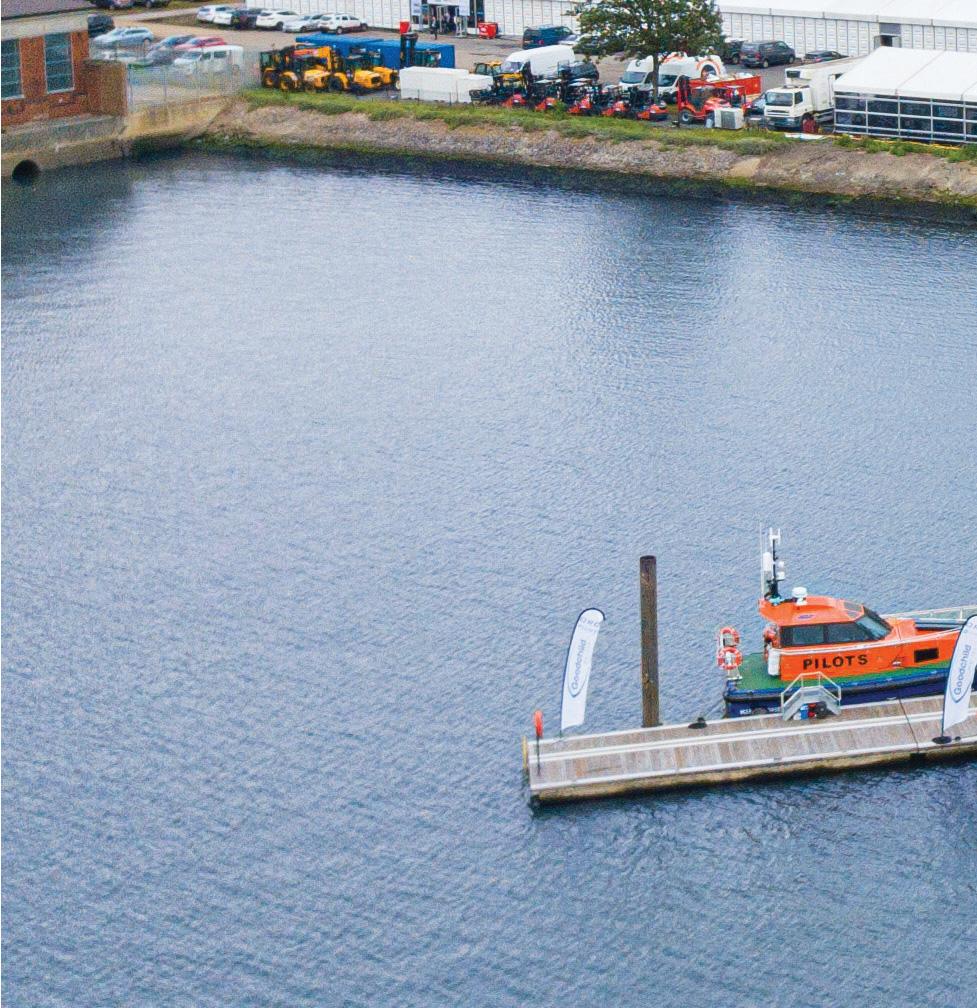
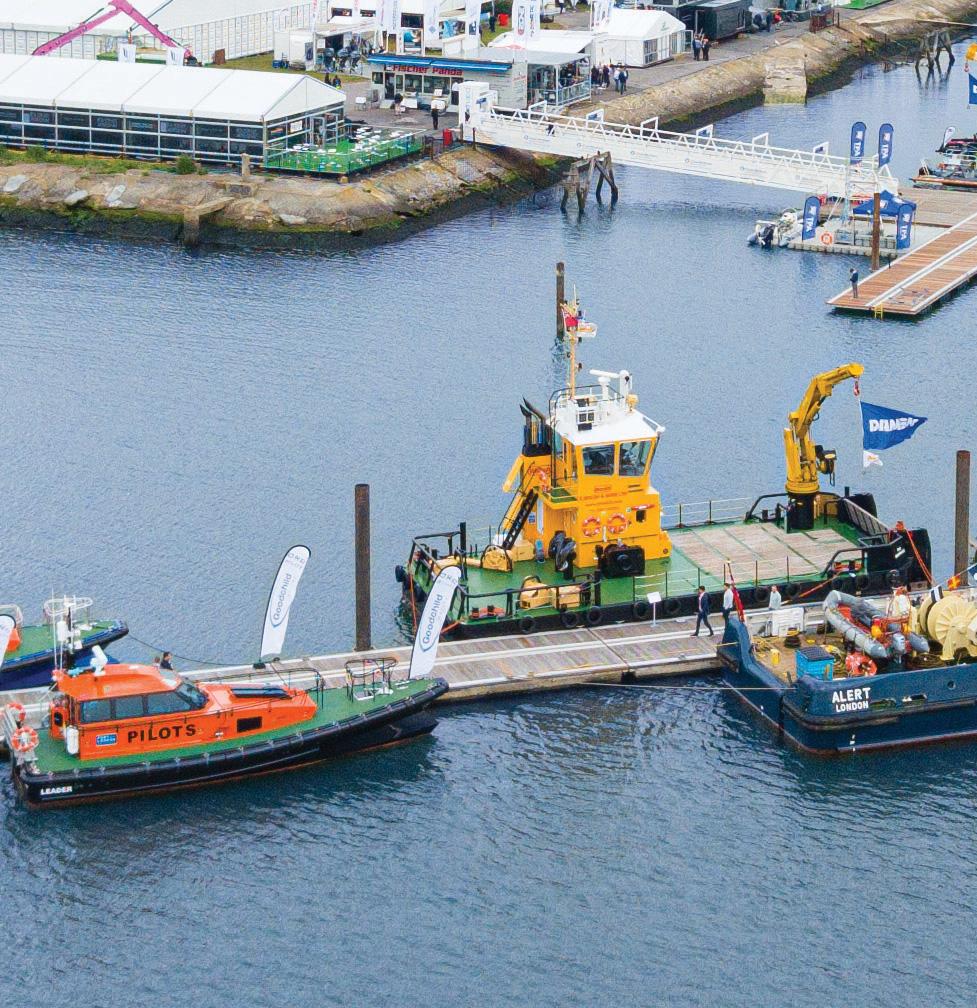
For more information visit: seawork.com contact: +44 1329 825 335 or email: info@seawork.com
Media partners:









